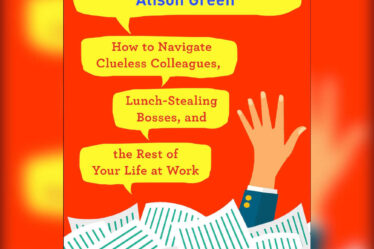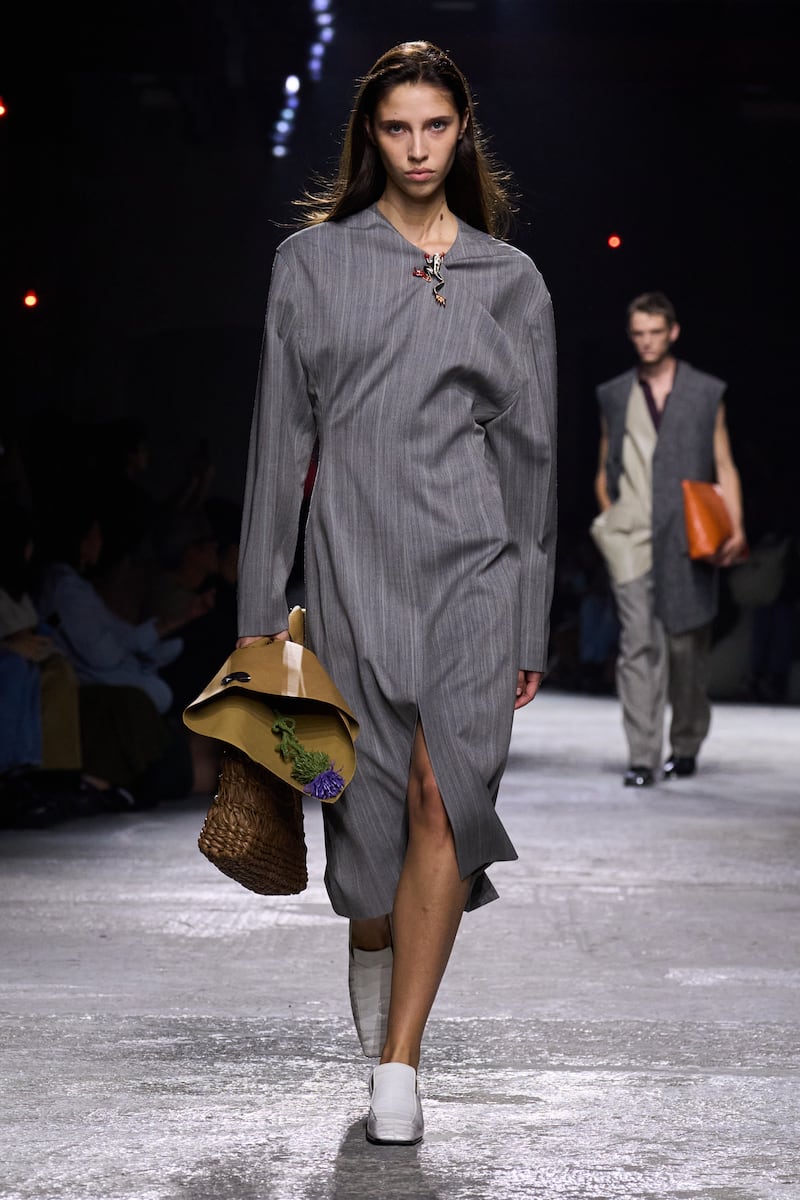
MILAN — On Saturday night, Bottega Veneta seated its guests on hundreds of huge beanbags in colourful animal form. Michelle Yeoh got a ladybird, Jacob Elordi a bunny rabbit. François Henri Pinault, CEO of Kering, was a bear. Fashion’s probably never been a more doggedly serious business than it is right now, but Matthieu Blazy turned the prelude to his Bottega Veneta presentation into a playground. For a joyful moment, “What’s your animal?” replaced woe about the third quarter. Mine, by the way, was a red fox, with a fine tail. I wish I could have taken him home with me, but the whole menagerie is destined for auction on the brand’s website.
Child’s play was on Blazy’s mind. In his show notes, he talked about childhood’s “adventure of the everyday.” One of his major reference points was “E.T.” which is, like many of Spielberg’s films, a coming-of-age story. One of the joys of Blazy’s show was watching him elaborate on that idea in a kind of coming and going of age, weaving backwards and forwards between a child’s view of the adult world, and a worldly adult’s rediscovery of a sense of play in dress. The scenario definitely benefited from the designer’s full post-show debrief, but you could still catch the drift from the colour, movement and energy on the catwalk.
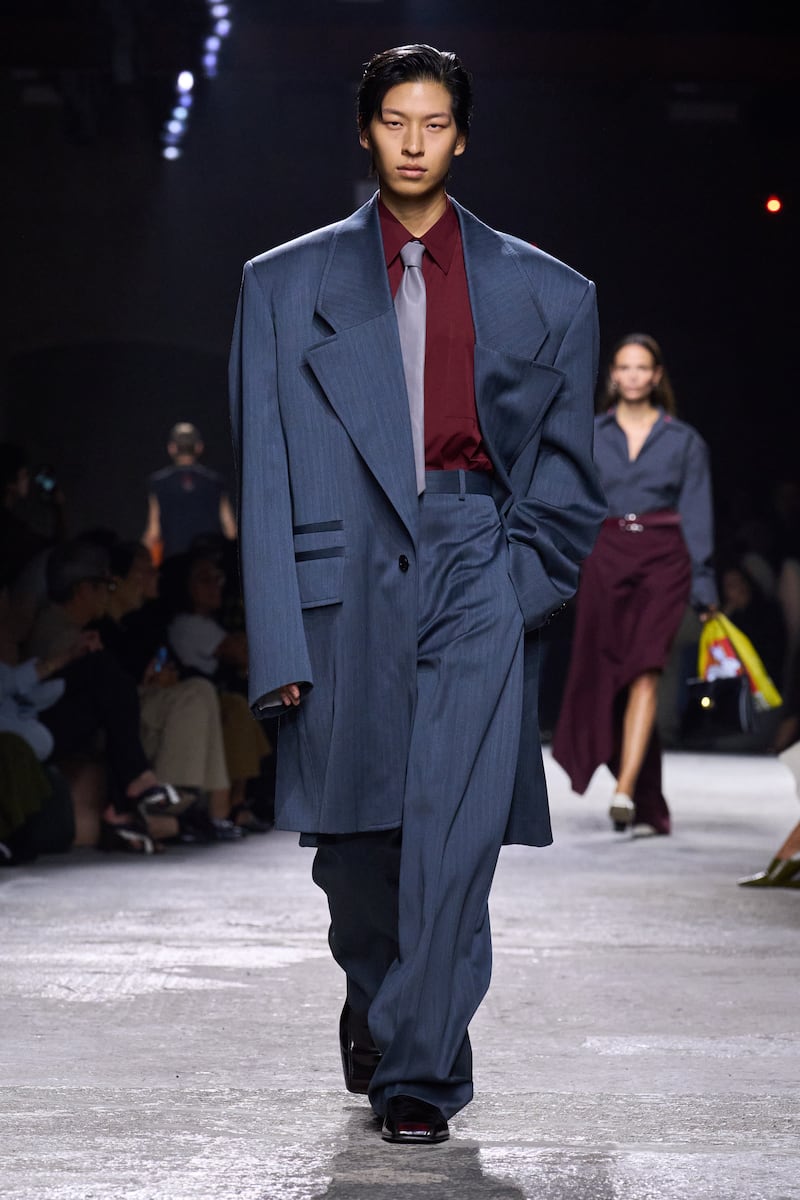



He started from the idea of “primal” fashion. Your first experience of fashion is playing dress-up in your parents’ clothes. The oversize tailoring had that flavour, in both women’s and menswear, with styling flourishes like rolled-back sleeves emphasising the too-big-ness. “Chic awkwardness,” Blazy called it. Same with the half skirt-half pant, which was his idea of playfulness from an adult perspective, a “why not?” proposal that Jean Paul Gaultier also suggested once, to similar striking effect. Blazy’s thought processes were fascinating. Continuing in the awkward vein, he imagined one slightly off dress as something nervously acquired for a job interview where a good impression was essential. No, the fit wasn’t the best, and the dress had a drab, institutional mien, but Blazy had attached a little articulated frog brooch to its collar as a message. The frog is as much a symbol of transformation as the butterfly. It’s a tiny ambassador for a world of wonders.
Like all his work for Bottega Veneta, Blazy’s collection was a celebration of character. And such characters! His idea of a businessman (Oh! That kimono-influenced top!) carried a child’s pink backpack across which ran a bunny rabbit (bunny ears another of the collection’s nature motifs). He imagined a dad dropping his little girl off at school. A woman in a sensational blouson and pants was carrying a plastic bag (surely not!). He imagined her as a chic Milanese in the supermarket. A strapless confection of fabric scales with dark flowers blossoming on a fiery background was somehow inspired by a drawing Blazy had seen of Darryl Hannah in “Splash.” He wanted a mermaid in his collection. Elsewhere in the show, he gave Hannah her normcore Tom Hanks. “It’s maybe not my childhood, but I can connect in some way to all of them,” he said.
You could attach similar vignettes to every single look if you had the time, such was their range and diversity. All forms of life were here. On the soundtrack, an emotional surge of the “Atonement” soundtrack veered into the celebratory “Put on Your Sunday Clothes” from “Hello Dolly,” to accompany a passage of people in wrinkled clothing (tropical wool with a little polyester to keep the crease) which reminded Blazy of how your parents sent you out neat as a new pin on the morning of your first day at school, and, by the end of the day, you’d come home a mess. Life is chaos, and clothes reflect that. As Blazy also said, “You try to dress up, you add something, you become a new monster, a kind of Frankenstein beauty.” He paraded women with their heads encased in wigs of raffia, and I imagined children fascinated, slightly freaked out. He also showed a jacquard of cigarette butts, and a black dress decorated with matches, as subtle reminders that “the adventure of the everyday,” the freedom to experiment that childhood offers is inevitably dangerous. But we continue to play, because it is exactly that: an act of freedom.
It would be hard to imagine anyone freer than Hugo Ball, who, at the height of the First World War, created Dada, a radical art movement that exalted chaos as a protest against the social, economic and political orthodoxies that had produced such a cataclysmically destructive conflict. Are we there again? Dada bloomed in Zurich. Here we stand on the brink of another abyss, and the spirit of Dadaism reappears in Switzerland, embedded in a collection by that most Swiss of fashion brands, Bally.

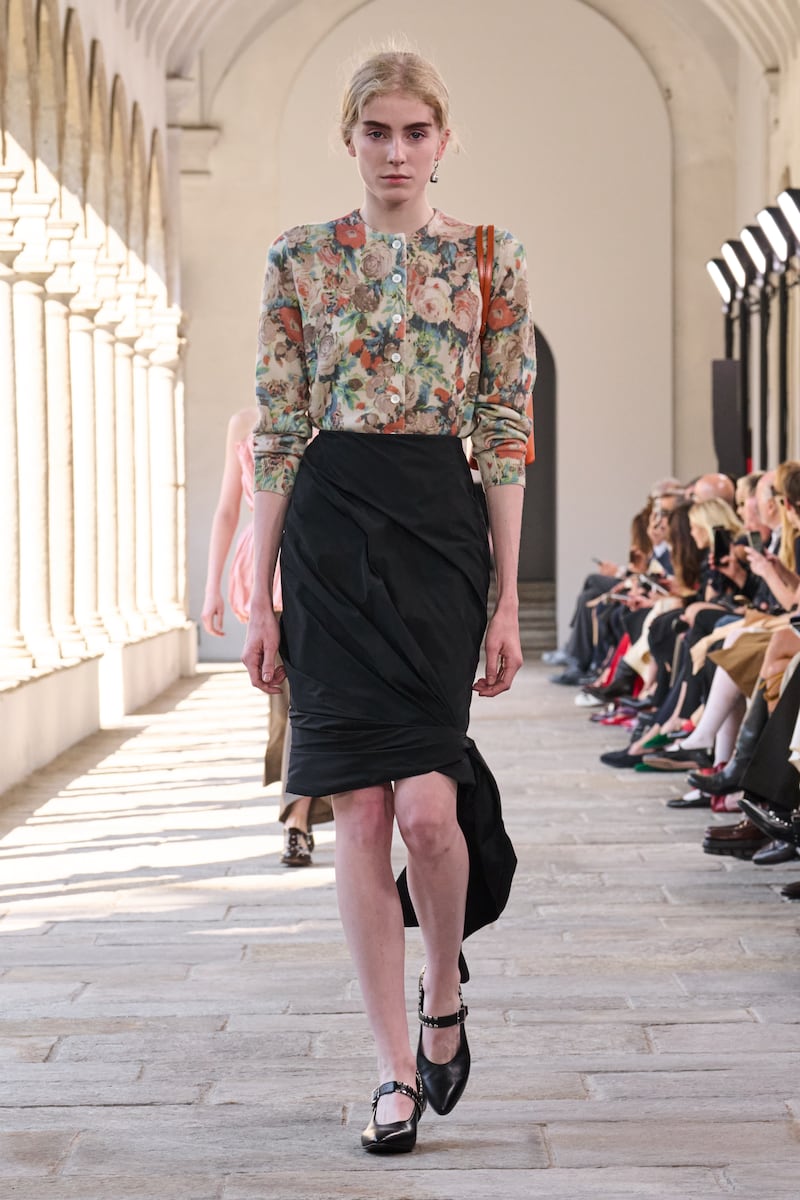
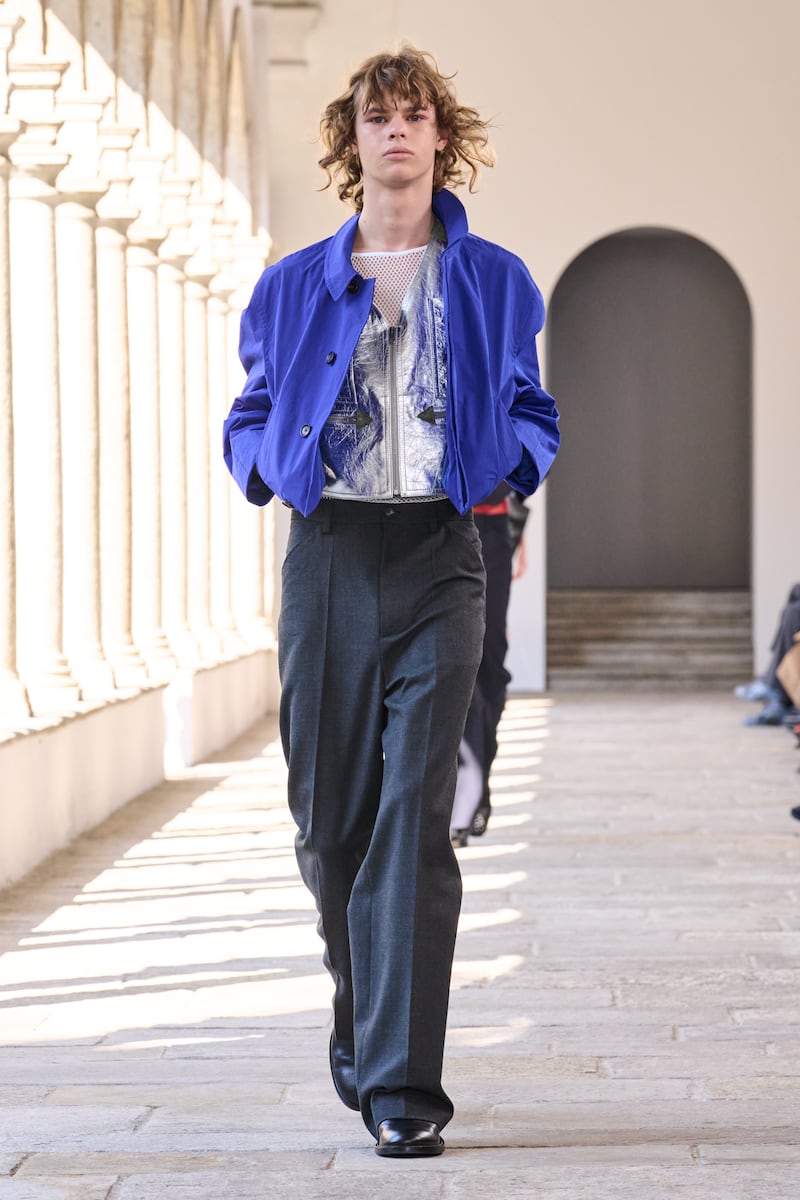
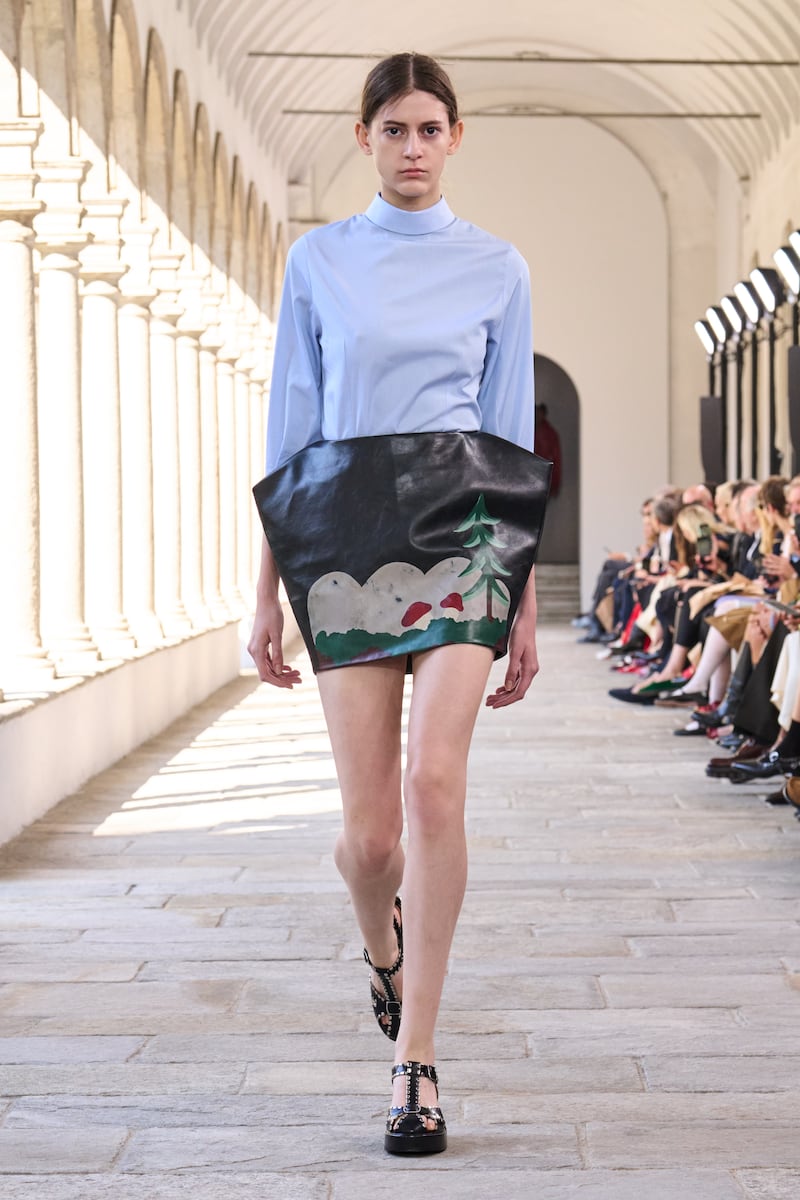
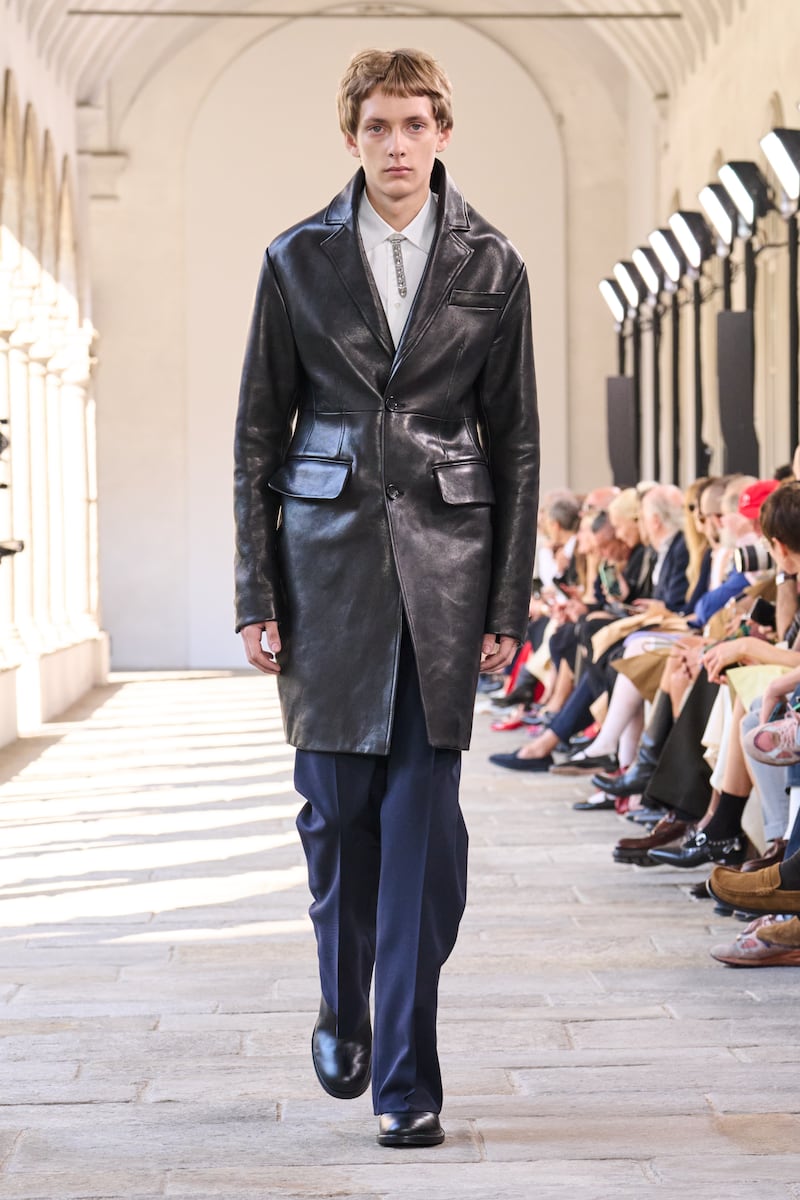
Creative director Simone Bellotti put the Ball in Bally courtesy of the silhouette he drew from one of Hugo’s cocoon-caped costumes for an early performance piece. A dropped shoulder, raised collar and rounded shape redefined Bally’s signature leathers. A mention of “decorum subverted by the avant garde” could have been borrowed from a Dada manifesto, the tailoring and the footwear exaggerated just so, a kind of dada-bourgeois. Bellotti said he was trying to find a balance between the precision that is a Swiss cliché and more organic elements, like flowers, mushrooms, stones, things you might collect on a hike in the Swiss Alps. And cowbells too, which he’s already added to Bally’s repertoire. Here, the bells weren’t just decoration, they inspired actual rounded-hip skirt shapes (hand-painted with a particularly magical mushroom), or peplums, like huge petals from which the lower body emerged.
Bellotti is on a mission to expand popular awareness of Switzerland beyond banks, chocolate, precision and neutrality. “It’s an amazing culture to explore,” he insisted after his show. But the perceptions he needs to change most immediately are obviously those that relate to Bally, a brand which is still best known for shoes and bags. The shoes Bellotti pulled from Bally’s formidable archive were perfect. He wanted something a little less so, and he was spectacularly successful in achieving that aim. The spiked heel counters (a reminder that Bellotti used to work at Gucci) and the studded mary janes were hardcore. An antique shoehorn from the archive provided beautiful, odd detailing for belt buckles and handbag straps. And there were women’s shoes with a fabulous clump which he’d unearthed from 1945. “I like masculine looks on women,” Bellotti said, unnecessarily in light of the strictly besuited women he’d just shown on his catwalk. Meret Oppenheimer was on his mood board, Surrealist, not Dadaist, but still furiously non-conformist.
As far as revealing Swiss culture’s less appreciated arcana goes, Bellotti couldn’t have done a better job with his music. Swiss-Nepali musician Aïsha Devi is described on-line as “a hypnotic, spherical musician.” She claimed the magnificent soundtrack she’d made was “designed to generate an alternate state of consciousness” in the true spirit of Dada. I know that I left Bally on Saturday with a mind that was well and truly changed.
Glenn Martens’ tribe of “aliens among us” has powered Diesel’s collections for most of the four years he’s led the brand. In Saturday’s show, his new model army was blessed with disconcerting mutant eyes. “They’re trying to look normal, not too crazy but they can’t hide it,” Martens explained. “So their eyes are exploding.”
That story – aliens trying to fit in – could be Martens’ own, and Diesel’s too. “I’ve always been a bit alternative in the industry,” he agreed. “And Diesel is an alternative to luxury. We are still in fashion week with crazy clothes but at the end of the day we’re a lifestyle brand doing denim and t-shirts and really cool products for everybody.” But that slightly generic notion is transformed in Diesel’s shows into something that is often thrillingly incomprehensible. Martens once admitted that there were catwalk clothes that would never see the light of day at retail because they were complicated one-offs that were simply too hard to scale. No longer! “Everything right now is industrialisable,” Martens said. “Everything on the runway can be made.” And that adds a different level of appreciation to the work that he and his team are doing.
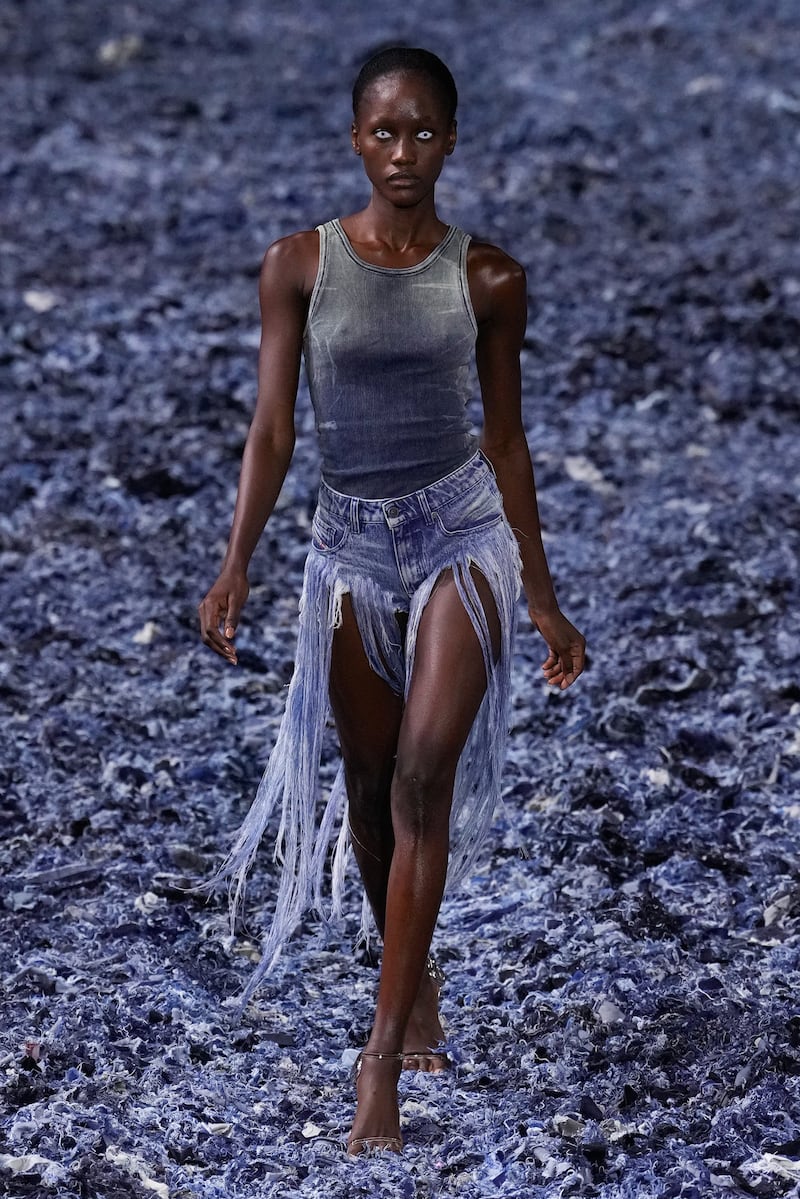
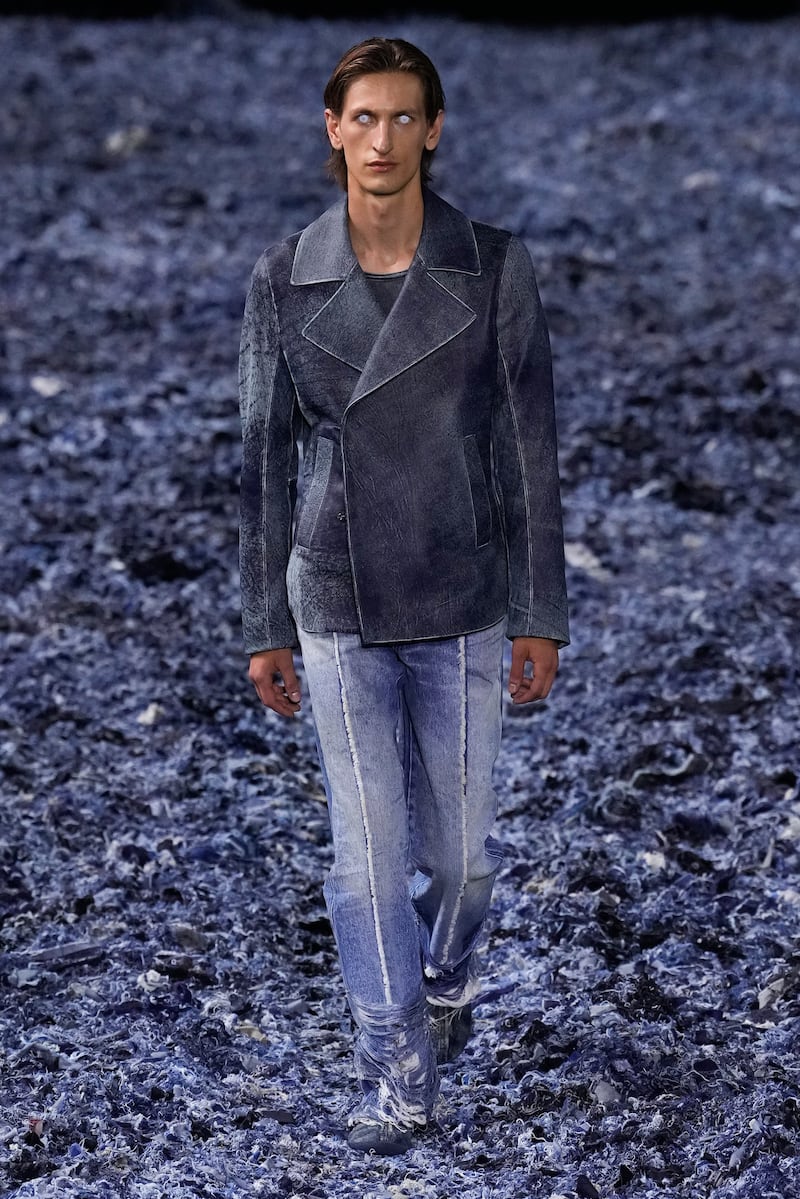
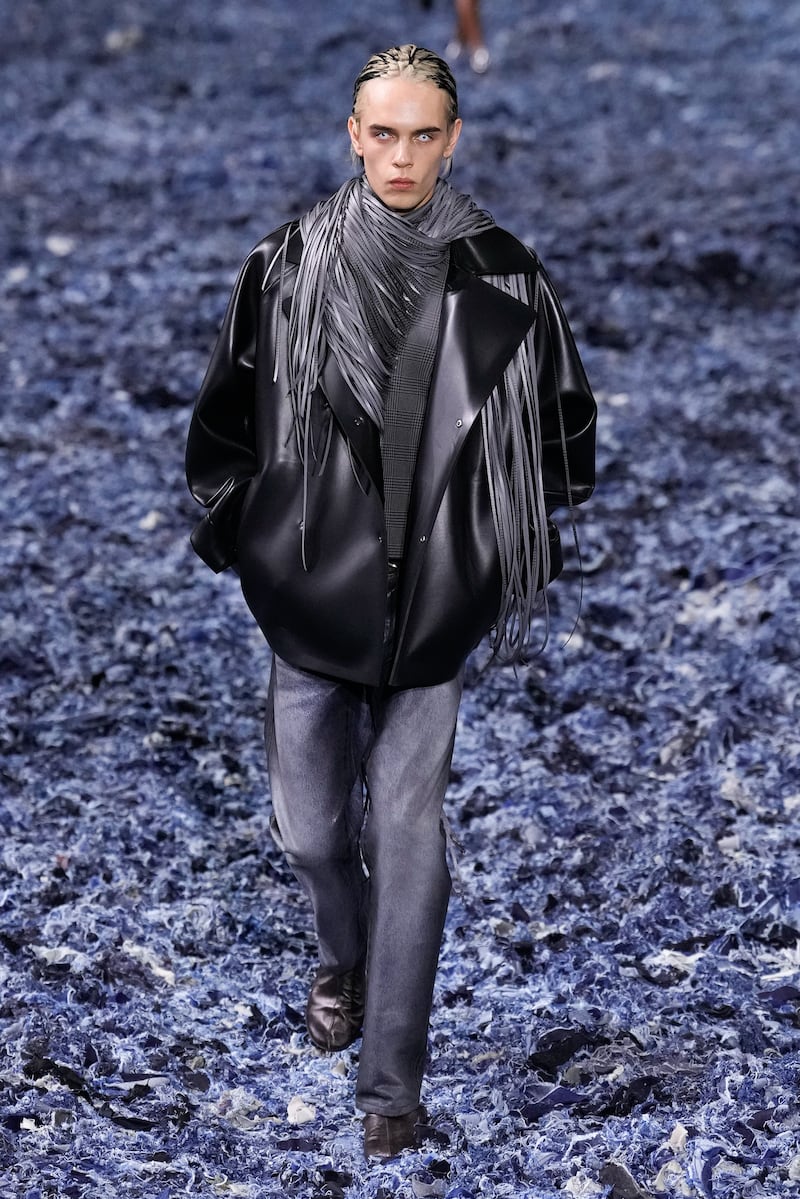
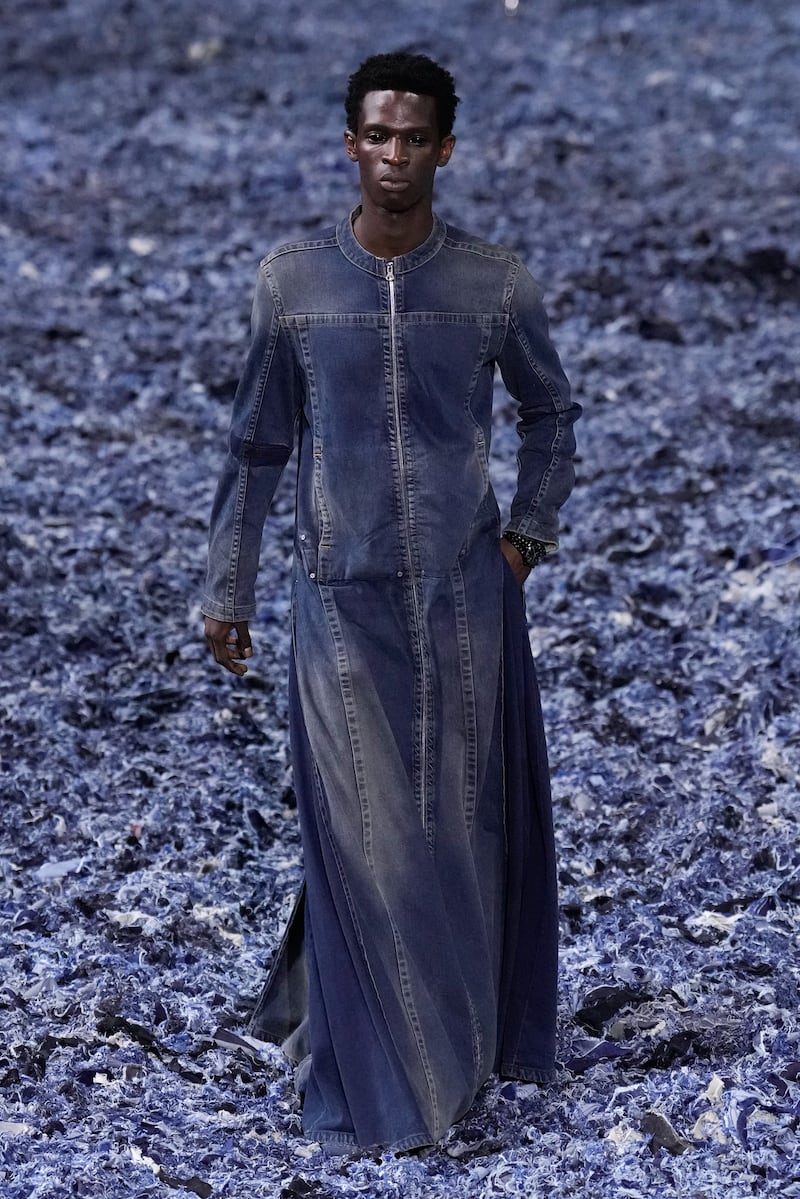
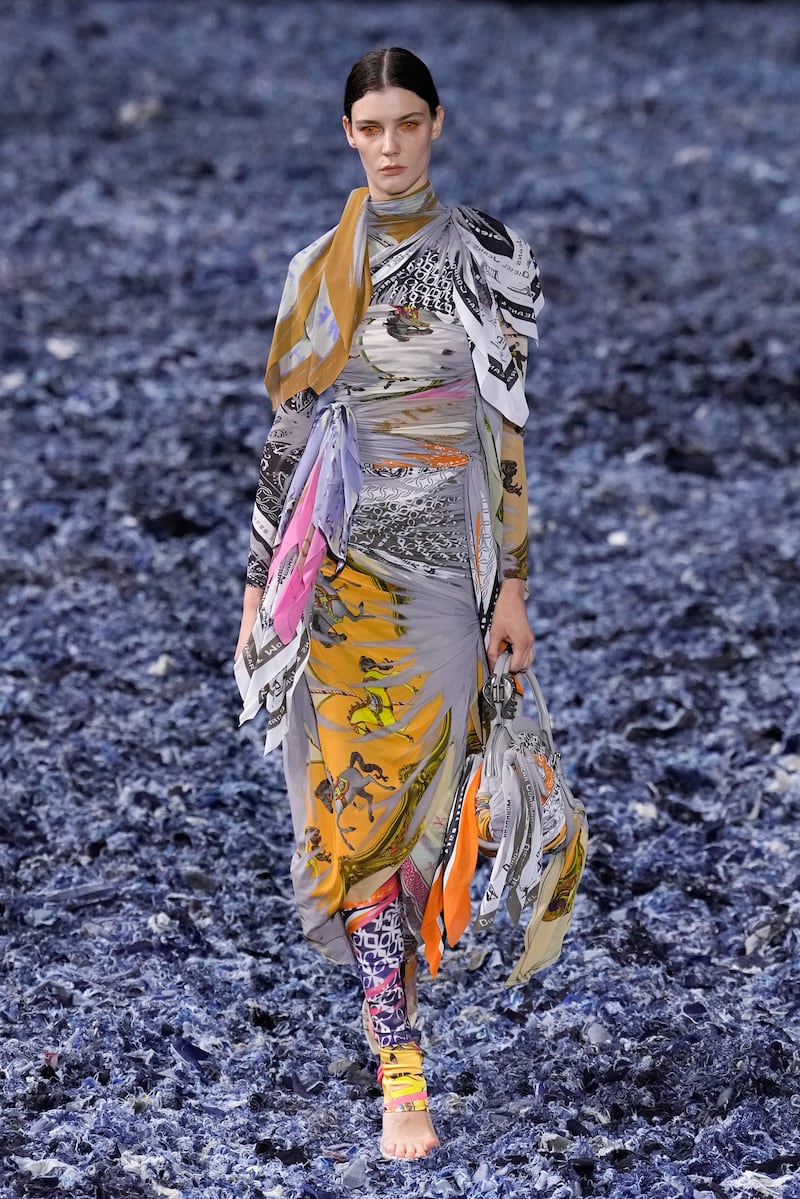
The visual spectacle this time was a denim wasteland, 1500 kilos of post-production denim scraps, which might have looked dystopian but actually celebrated a message that was anything but. As Martens said, “Four years ago when I arrived at Diesel we had three percent of our denim fibres made out of regenerative, organic or recycled cotton. Now we’re at 57 percent.” Plus the business is building up clean brands, because basic garments are left untreated, which means less toxicity. That’s how things roll at Diesel, where 40 years of expertise has created the university of denim. Even now, when he’s learned enough that he considers himself “potentially a denim master,” Martens can look at what his team is making and marvel, “How did you do that?”
Where that happened in Saturday’s show was with denim so light it was gossamer, and frayed fibres so fine they were angel hair. Diesel’s fabric technology is surely second to none. I couldn’t think of higher praise than to say that its artisanal effects sometimes remind me of Issey Miyake. As well as the lightness, there were what seemed to be substantial, classic Prince of Wales checks that were actually printed denim. Coats and jackets of this fabric dissolved into long, thick fringes that were draped like a cloak. And that was a real what thuh! moment.
Martens felt the show was more measured than usual, “because Diesel is maturing.” He was especially enthused by the dresses that closed the show: dozens of vintage Diesel scarves wrapped, tied and stitched into a single sinuous column. The soundtrack featured a lengthy AI-generated tutorial about denim and indigo dye. Mercifully, maturity didn’t mean the retirement of the usual musical racket. During the show, the AI earworm was steadily co-opted by a raging storm of the pounding techno that Martens loves. In life, as in art.

